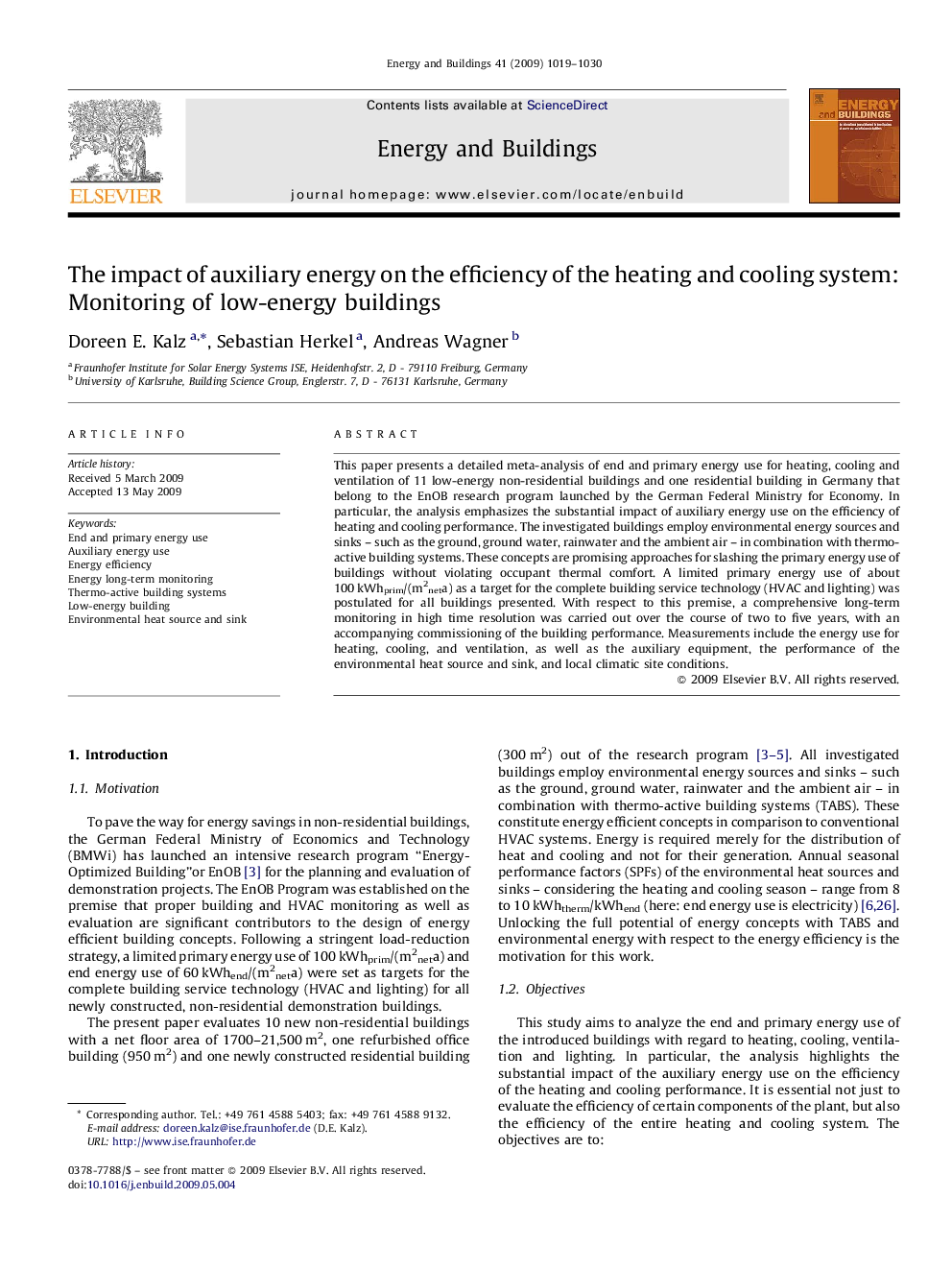| کد مقاله | کد نشریه | سال انتشار | مقاله انگلیسی | نسخه تمام متن |
|---|---|---|---|---|
| 264805 | 504115 | 2009 | 12 صفحه PDF | دانلود رایگان |

This paper presents a detailed meta-analysis of end and primary energy use for heating, cooling and ventilation of 11 low-energy non-residential buildings and one residential building in Germany that belong to the EnOB research program launched by the German Federal Ministry for Economy. In particular, the analysis emphasizes the substantial impact of auxiliary energy use on the efficiency of heating and cooling performance. The investigated buildings employ environmental energy sources and sinks – such as the ground, ground water, rainwater and the ambient air – in combination with thermo-active building systems. These concepts are promising approaches for slashing the primary energy use of buildings without violating occupant thermal comfort. A limited primary energy use of about 100 kWhprim/(m2neta) as a target for the complete building service technology (HVAC and lighting) was postulated for all buildings presented. With respect to this premise, a comprehensive long-term monitoring in high time resolution was carried out over the course of two to five years, with an accompanying commissioning of the building performance. Measurements include the energy use for heating, cooling, and ventilation, as well as the auxiliary equipment, the performance of the environmental heat source and sink, and local climatic site conditions.
Journal: Energy and Buildings - Volume 41, Issue 10, October 2009, Pages 1019–1030